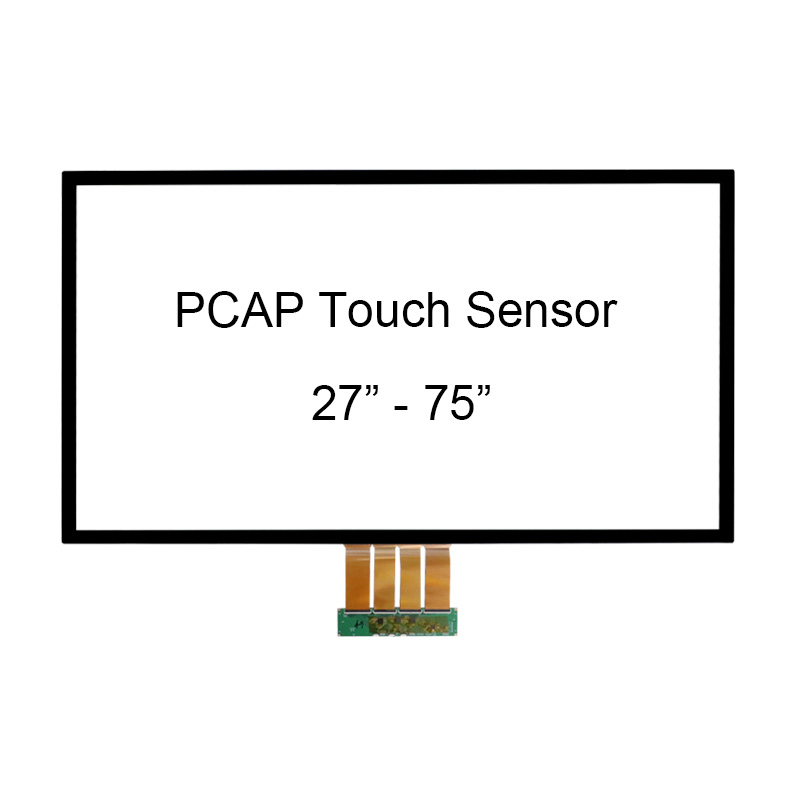Mar. 10, 2023
Consumer Electronics
In today's fast-paced technological era, touchscreen devices are ubiquitous in our daily lives, from smartphones to tablets, laptops, and even home appliances. These devices are increasingly becoming the go-to interface for people worldwide, making touchscreen technology a critical component of modern computing. One of the most popular and widely used touchscreen sensors is the Projected Capacitive Touch (PCAP) sensor. In this article, we will explore the PCAP touchscreen sensor and how it has revolutionized the user interface experience.
PCAP is a popular technology used in the construction of capacitive touchscreens. This sensor works by utilizing the electrical properties of the human body. When a finger or stylus touches the screen, it creates a disturbance in the electrical field of the sensor, which is then detected by the PCAP controller. This disturbance is translated into an input command, allowing the user to interact with the device.
The PCAP sensor consists of two layers of glass, coated with a transparent conductive material such as Indium Tin Oxide (ITO). When a finger touches the surface of the screen, it creates a conductive path between the two layers, which is then detected by the controller. The controller then calculates the exact location of the touch point and sends the corresponding input command to the device's processor.

PCAP touchscreen sensors are known for their high level of accuracy, sensitivity, and reliability, making them ideal for a wide range of applications, from smartphones and tablets to industrial control systems, point-of-sale terminals, and medical devices.
Advantages of PCAP Touchscreen Sensor
The popularity of PCAP touchscreen sensors can be attributed to the many advantages they offer over other touchscreen technologies. Here are some of the benefits of PCAP touchscreens:
High Accuracy: PCAP touchscreens are highly accurate and can detect even the slightest touch or gesture, making them ideal for precision applications such as drawing and handwriting recognition.
Multi-Touch Support: PCAP touchscreens support multi-touch gestures, allowing users to perform complex operations such as pinch-to-zoom, swipe, and rotate.
Durability: PCAP touchscreens are built to last, with a robust construction that can withstand heavy use and exposure to harsh environments.
Clarity: PCAP touchscreens are known for their clarity and brightness, with excellent color reproduction and viewing angles.
Related links:No Calibration Required: Unlike other touchscreen technologies, PCAP touchscreens do not require calibration, making them easier to set up and maintain.
Applications of PCAP Touchscreen Sensor
PCAP touchscreens are used in a wide range of applications, from consumer electronics to industrial and medical devices. Here are some of the areas where PCAP touchscreens are commonly used:
Consumer Electronics: PCAP touch screens are used in smartphones, tablets, laptops, and other consumer electronics, providing users with a seamless and intuitive interface.
Industrial Control Systems: PCAP touchscreens are used in industrial control systems, providing operators with an easy-to-use interface for controlling complex machinery and processes.
Point-of-Sale Terminals: PCAP touchscreens are used in point-of-sale terminals, allowing customers to interact with the system to make purchases and transactions.
Medical Devices: PCAP touchscreens are used in medical devices such as patient monitors and diagnostic equipment, providing healthcare professionals with an easy-to-use interface for patient care.
Conclusion
In conclusion, the PCAP touchscreen sensor has revolutionized the user interface experience, providing users with a seamless and intuitive way to interact with devices. With its high accuracy, multi-touch support, durability, clarity, and ease of use, the PCAP touchscreen sensor is rapidly becoming the go-to technology for touchscreen devices worldwide.
Previous: How Bluetooth Speakers Revolutionized the Audio Industry
Next: About the key features of the E-Bike Battery Connector
If you are interested in sending in a Guest Blogger Submission,welcome to write for us!
All Comments ( 0 )